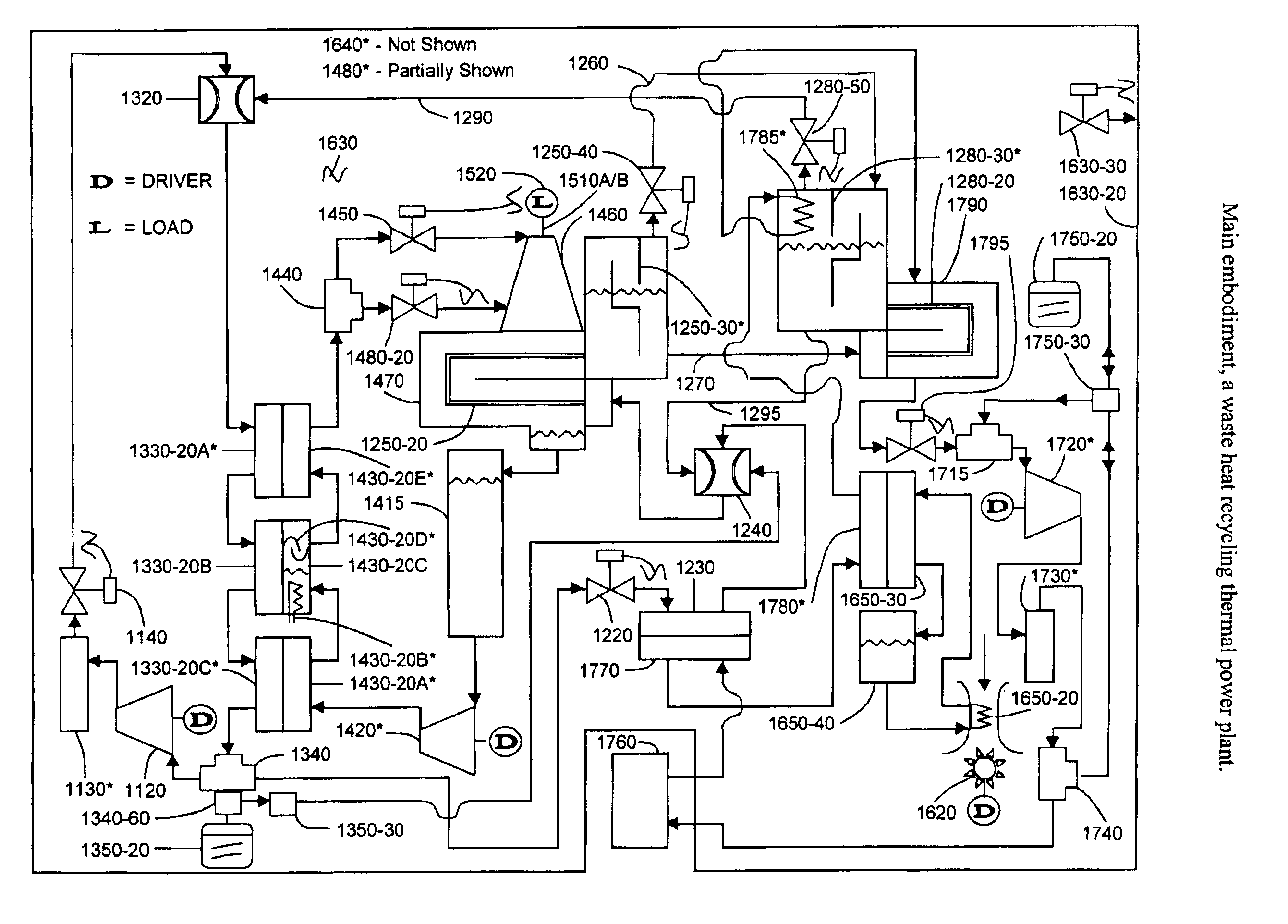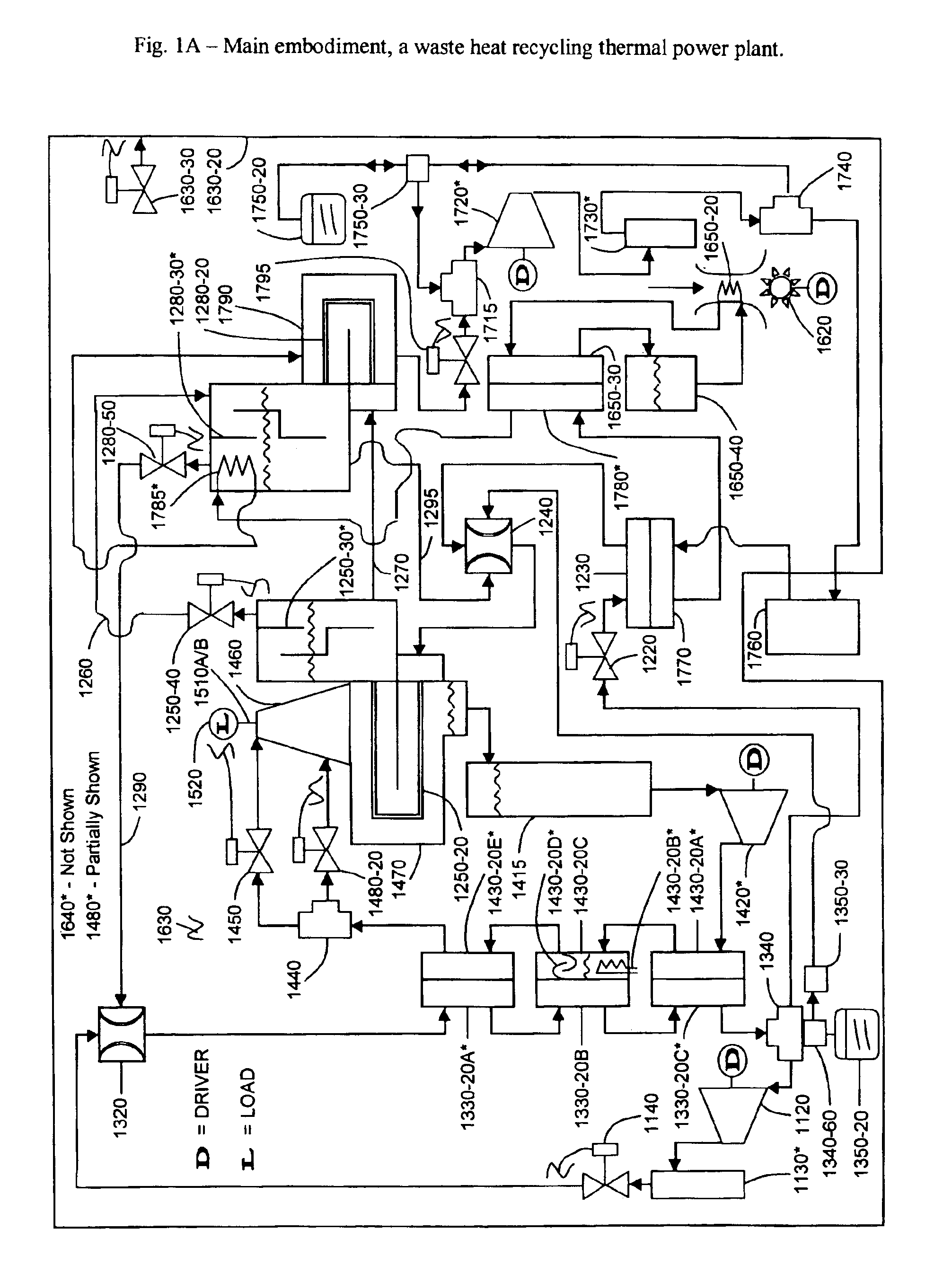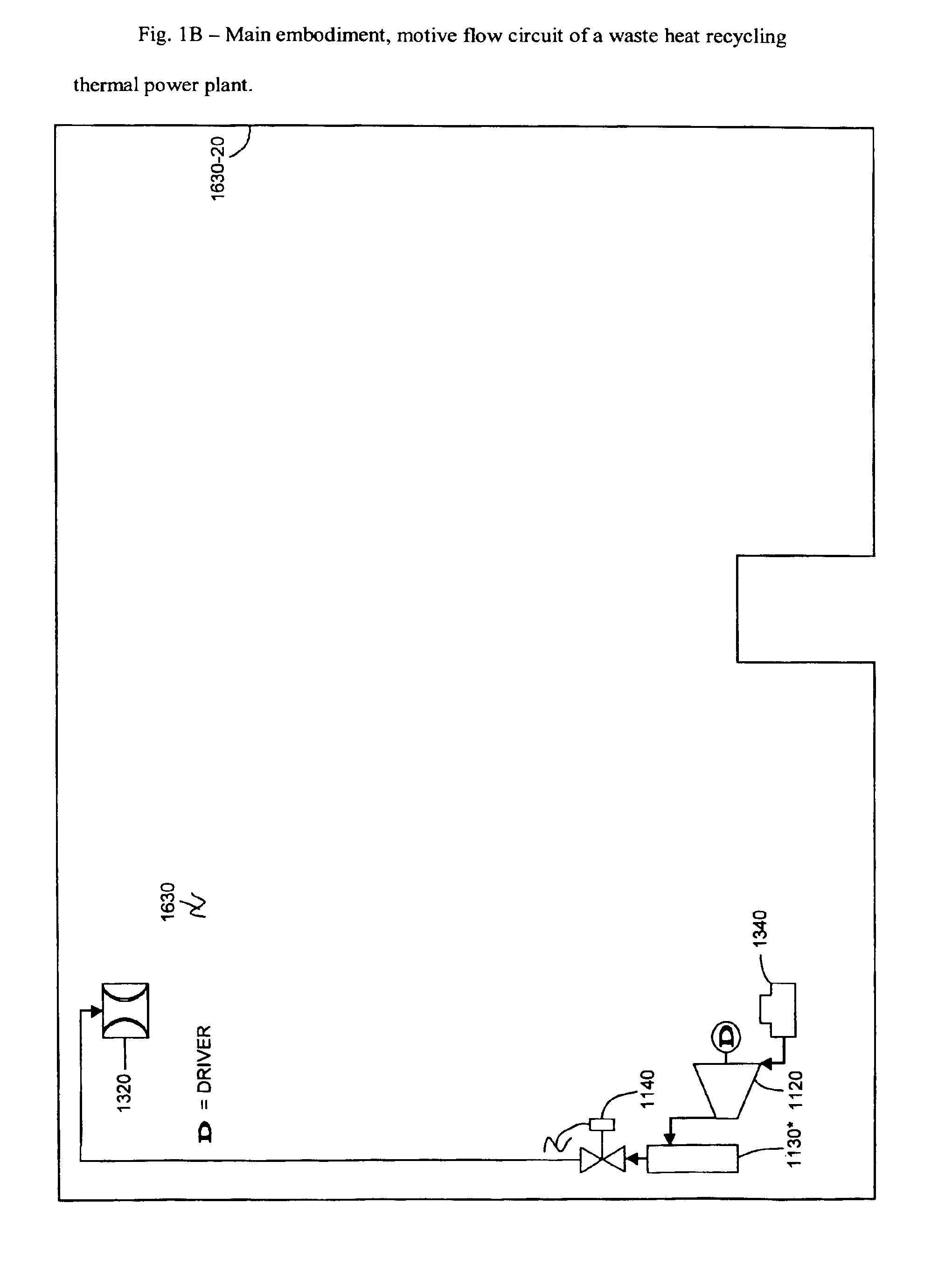Method and apparatus for a waste heat recycling thermal power plant
a waste heat and thermal power plant technology, applied in the field of methods, can solve the problems of inherently inefficientrankine cycle, inability to produce electrical power less expensively, and inability to employ large and therefore cost-effective components, and achieve the effect of increasing the output capacity of the “host” engin
- Summary
- Abstract
- Description
- Claims
- Application Information
AI Technical Summary
Benefits of technology
Problems solved by technology
Method used
Image
Examples
Embodiment Construction
1. Main Embodiment—Physical Layout
[0039]A waste heat recycling thermal power plant 1000 (FIG. 1A) consists primarily of two conjoined circuits, a motive flow circuit 1100 and a suction flow circuit 1200 of a volatile working fluid (the conjoined portions of motive flow circuit 1100 and suction flow circuit 1200 are identified as a conjoined flow circuit 1300). Additionally, waste heat recycling thermal power plant 1000 includes an incorporated heat engine flow circuit 1400 connected to a mechanical output device 1500, a heat recovery flow circuit 1600 (optional, a heat source flow circuit 1700, and the subcomponents contained therein. These circuits and their subcomponents are described below; the interconnecting piping / ducting is described only where necessary to add clarity to the description.
[0040]Motive flow circuit 1100 (FIG. 1B) which originates at a cfd flow separation chamber 1340-30, and successively flows through: a cfd motive flow discharge 1340-40, an mfc fluid transfer ...
PUM
 Login to View More
Login to View More Abstract
Description
Claims
Application Information
 Login to View More
Login to View More - R&D
- Intellectual Property
- Life Sciences
- Materials
- Tech Scout
- Unparalleled Data Quality
- Higher Quality Content
- 60% Fewer Hallucinations
Browse by: Latest US Patents, China's latest patents, Technical Efficacy Thesaurus, Application Domain, Technology Topic, Popular Technical Reports.
© 2025 PatSnap. All rights reserved.Legal|Privacy policy|Modern Slavery Act Transparency Statement|Sitemap|About US| Contact US: help@patsnap.com



